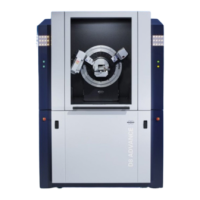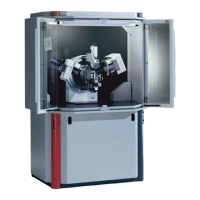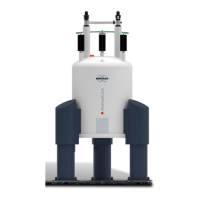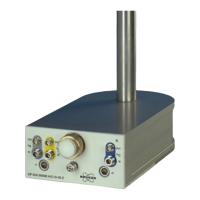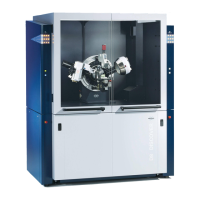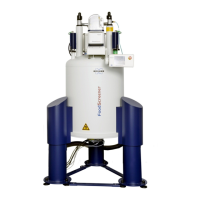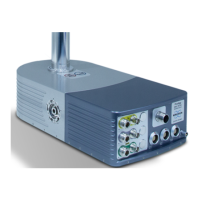D2 PHASER User Manual
DOC-M88-EXX141 V5 – 01.2015 27
converted into X-rays. The anode consists of a metal (for example, Rh, Mo or Cr) that produces a
characteristic wavelength. A water cooling system prevents it from overheating.
X-ray tubes usually have a thin Beryllium windows by which the X-rays escape to the outside. The
tube is partly clad with a heavy absorbing material such as lead to prevent the X-rays emitted in other
directions from penetrating to the outside.
Fig. a: Schematic diagram of an X-ray tube
Continuous Spectrum
When accelerated electrons collide with atoms of the metal target, they can be stopped on impact, in
which case all their energy is converted into radiant energy, or they can be decelerated in steps, in
which case a part of their total energy is released in the form of X-rays of greater wavelengths at each
step until it is expended. The incident electron enters the electric field between the electrons and the
nucleus of an atom and is deflected and decelerated by it at the same time. This process is repeated
when the deflected electron enters the electric fields of other atoms.
Fig. b: Production of continuous (white) radiation.
The waves of X-rays generated in this way are called “continuous” radiation because they form a
continuous spectrum of wavelengths.
Negative cathode (tungsten
filament)
Cooling water for anode
Positive anode
Beryllium window
e.g. 75 µm
Electron beam
X-ray
beam
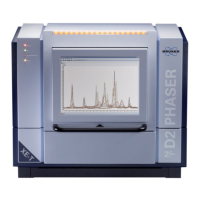
